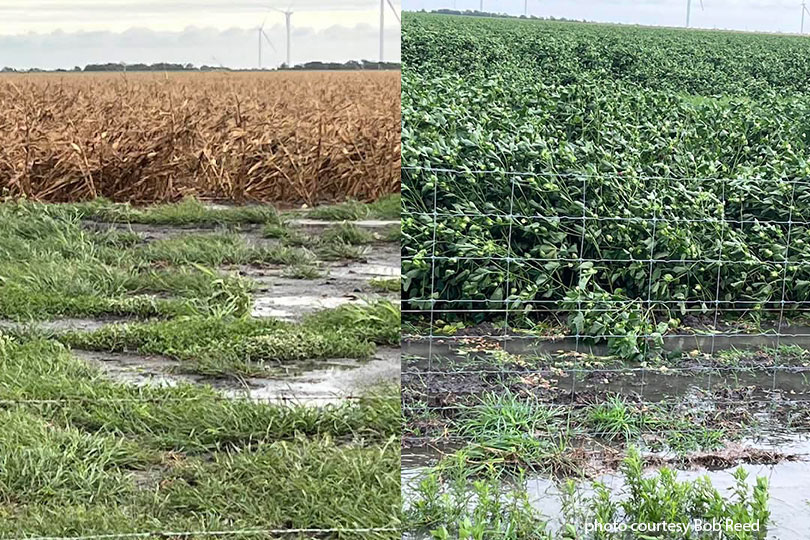By Shelby Shank
Field Editor
Hurricane Beryl slammed into the Texas coast this week, leaving many farmers and ranchers to assess damages to crops, equipment and facilities.
“Living and growing up on the coast, it starts to become second nature preparing for a hurricane or tropical storm, but you’re still never ready,” Hailey Hayes, a farmer in Port Lavaca, said. “You take things one at a time and prioritize.”
Beryl first hit Texas with rain and intensifying winds on Sunday, prompting coastal residents to board up windows and prepare for the worst.
Hayes and her family began taking precautionary measures, strapping down their farrowing barn, mixing feed, having generators ready and putting equipment back in barns while the heat index was over 100 degrees.
By Monday morning, the storm made landfall as a Category 1 hurricane before weakening into a tropical storm. About 2.7 million homes and businesses are without power in the Houston area and two deaths have been confirmed.
While Hayes wasn’t in the direct path of the storm once Beryl hit Texas, farmers east of them weren’t as lucky.
Farmers like Bob Reed, who grows corn and cotton in Matagorda County, began assessing the damage from the storm.
“There are varying degrees of damage. I didn’t see anything that wasn’t damaged,” Reed told the Texas Farm Bureau Radio Network. “Some of it was damaged more than others. There’s some milo in the field that hadn’t been harvest yet, and it looks pretty sad.”
Much of the corn crop, which is ready to be harvested, suffered under Beryl’s 70 mile per hour (mph) winds.
“I didn’t see anything that was blown over all the way to the ground. All of it just leaned pretty bad, so I think the harvest equipment will still be able to get through once things dry and field conditions get better,” he said.
Reed noted the cotton is two weeks to a month away from being defoliated.
“The cotton is blown pretty bad, too. You can’t really tell which direction the rows are running, it’s blown that bad, but it’s still standing,” he said. “The cotton crops looks like they can be salvaged, and for the most part, we had a really good cotton crop in the county.”
Despite the severe weather, Reed remains hopeful.
“These things happen, and you have no control. When you put that seed in the ground, you may never harvest it, but it’s never an easy pill to swallow when that comes along,” he said.
The challenges brought by Beryl are evident.
There’s major flooding in his area, with creeks and drainage systems overflowing.
“The winds were up to 90 mph, and we had quite a bit of rain,” he said. “I don’t know how much rain we got, but I have six-inch gauge that was running over when I emptied it this morning.”
Beryl was not as damaging as Hurricane Harvey, but Reed noted he still remembers what that time felt like.
“I still have images of Hurricane Harvey in my mind,” he said. “It’ll probably be there from now on, but this storm was not nearly as damaging as that.”
Acting Texas Governor Dan Patrick declared 121 counties to be disaster areas ahead of the storm on Sunday.


Leave A Comment